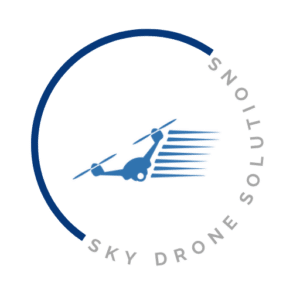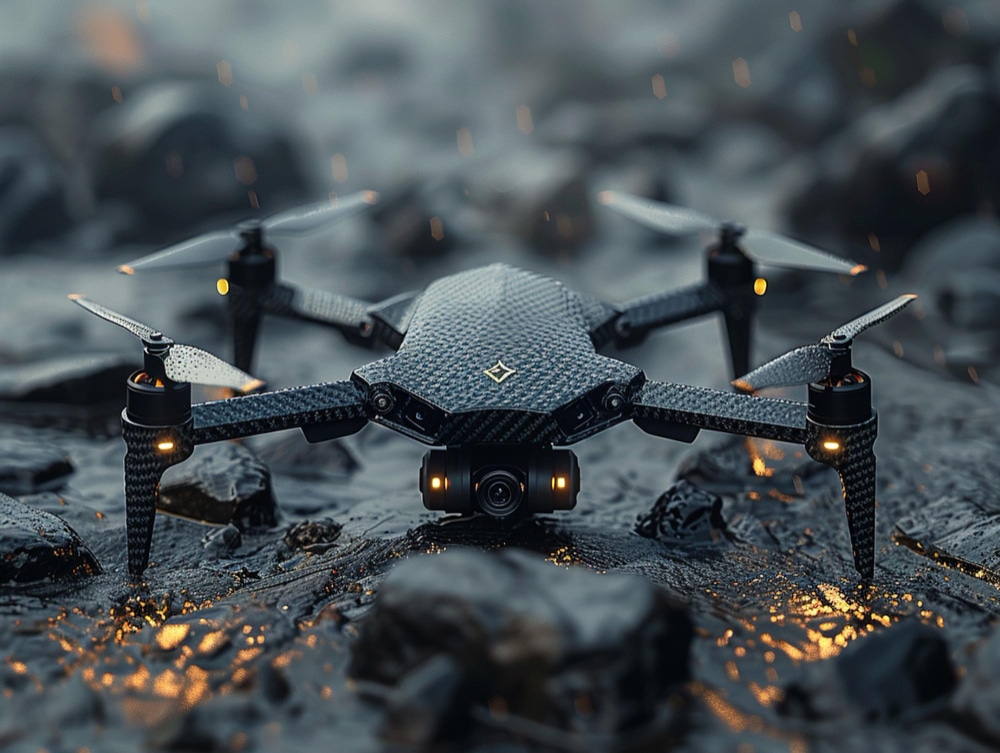Technical Challenges in Powering a Tethered UAV: Energy, Voltage, and More
Powering a tethered UAV poses unique technical challenges that need careful consideration, particularly regarding energy and voltage management. Since tethered drones rely on continuous power from the ground, the design of UAV power solutions must ensure a stable and sufficient energy supply to meet operational demands.
Voltage is critical; too high or too low can lead to inefficiencies or even component damage. One of the primary technical obstacles is managing the voltage drop over the lengthy tether.
As the distance increases, so does the likelihood of experiencing significant voltage drops, which can compromise the UAV’s power and overall performance.
To counteract this, high-efficiency power supplies and DC-DC converters are often implemented to regulate and maintain optimal voltage levels.
Moreover, the type of cable used in the rope can significantly impact the UAV’s power capacity due to its resistance properties.
Sky Drone Solutions has many happy clients for any mapping project.
Transmission Line Effects and Voltage Considerations for Tethered UAVs
Understanding transmission line effects and voltage considerations is vital when designing systems for tethered drones. One of the key challenges is managing the power rope, which acts as a physical and electrical conduit.
The proper selection of wire for the power tether plays a crucial role; it must support the voltage and current needed while minimizing losses. Different types of power supplies will output varying voltages, which need to be efficiently transmitted through the wire series to ensure optimal performance of the UAV systems.
Voltage drop is a significant factor, especially over longer distances, impacting the reliability of the tethered UAV. Understanding the behavior of electrical transmission lines and the effects of resistance, capacitance, and inductance in the wire series helps predict and mitigate issues such as signal degradation and power loss.
Utilizing high-quality power supplies that provide stable and consistent output is essential for maintaining the functionality and safety of your UAV systems.
Moreover, different mission profiles might require different voltage settings; hence, adaptable power tether solutions are essential. In summary, by carefully considering the transmission line effects and voltage requirements, you can optimize the performance and reliability of your tethered drone systems.
With Sky Drone Solutions, we help you navigate these complexities to achieve effective and efficient tethered UAV operations.
How to Select a DC-DC Converter for Your Tethered Drone
Selecting the suitable DC-DC converter for your tethered drone is crucial to ensure reliable and efficient performance. The first step is to consider your setup’s input voltage and output voltage requirements, as a mismatch here can lead to inefficiency or even damage to your UAV power system.
The power supply must typically handle a consistent input voltage while delivering a stable output voltage to power all drone components effectively. Factor in the energy consumption of your drone’s systems to avoid undersizing the converter, which could lead to power shortages during critical operations.
Another important aspect is the converter’s efficiency rate, directly impacting how much energy is converted versus lost as heat. Higher efficiency means more energy is available for actual use, thus extending the operational time of your tethered drone.
Ensure the power supply can handle the peak power demands, especially during takeoff and other high-energy maneuvers. This attention to detail helps maintain the voltage stability required for optimal UAV power performance.
When choosing a DC-DC converter, it’s also wise to look at the size and weight, as these factors contribute to the overall payload capacity of your drone. Redundancy features and robust protective mechanisms against over-voltage or short-circuit conditions are additional considerations to ensure long-term reliability.
By meticulously selecting the suitable DC-DC converter, you can significantly enhance the performance and reliability of your tethered UAV solutions with Sky Drone Solutions.
A Practical Example of Powering a Tethered Drone
There’s much to consider when powering a tethered drone to ensure your UAV systems operate efficiently. At Sky Drone Solutions, we emphasize the importance of selecting the right power solutions and components.
In this practical example, we’ll explore how a DIY tether can be configured for continuous operation by integrating key elements such as the power rope, appropriate energy sources, and efficient voltage regulation.
Firstly, the choice of power tether is crucial as it must handle the energy output required by the drone. Selecting a rope with the right specs means considering the weight, strength, and capability to transmit the needed voltage without significant losses.
An integrated tethered setup often includes a robust power management system to convert and regulate the input voltage to suitable levels for the drone’s needs.
To illustrate, let’s say your tethered drone requires a steady 48V output. You must ensure that your power solutions include a DC-DC converter to handle voltage conversion and stability under varying operational conditions.
This ensures that your energy supply is consistent, avoiding potential drops that could impact performance. Using a DIY tether, crafted with high-quality materials and designed for efficiency, can significantly enhance the longevity and reliability of your drone systems.
At Sky Drone Solutions, we provide insights and products tailored to meet these stringent requirements for a seamless and practical integrated tethered drone experience.
What can you use a tethered drone for
Tethered drones, often called drone-tethered systems, have become increasingly popular across various enterprise and industrial applications due to their unique capabilities. One of the primary uses of tethered drones is in surveillance and security.
Thanks to their ability to remain airborne for extended periods, tethered drones provide a continuous aerial view, making them invaluable for monitoring large areas. Additionally, they play a crucial role in communications and data relay, offering reliable solutions for maintaining communication networks in remote or disaster-stricken areas.
Another significant application of tethered drones is in media and broadcasting. Whether capturing live sports events, concerts, or news, a tethered drone can deliver high-quality, stable footage without running out of power.
Industrial inspections also benefit from the use of tethered systems. Tethered drones offer a safe, efficient, and cost-effective alternative to traditional methods for enterprise-level infrastructure inspections like bridges, power lines, and pipelines.
Furthermore, environmental monitoring and research activities are enhanced by the prolonged operational time of tethered drones, allowing for continuous data collection over sensitive ecosystems.
In summary, tethered drones provide versatile and dependable solutions required for various sectors, making them indispensable tools in enterprise and industrial settings.
What are some design questions for making a tethered drone?
Creating an effective tethered drone involves answering several crucial design questions to ensure your system operates efficiently and safely. Firstly, consider the power requirements. How will your diy tether reliably deliver power to your drone-tethered system? You must determine the voltage and current levels for your drone’s optimal performance.
Identify the right power supplies that will be integrated into your tethered systems. Ensuring stable power flow is crucial for sustained operations. Next, consider the rope’s material and how it’ll impact the drone’s maneuverability.
Durability and weight are significant factors; a heavier tether could limit your drone’s range and flexibility. Another question revolves around data transmission. How will the tethered system transmit data from the drone back to your control station?
A reliable communication link ensures real-time data transfer, vital for mission success. What length of rope do you need? The required length largely depends on your operational scope and environment.
The environmental conditions in which the drone will be deployed should also be considered. External factors like wind and weather require specialized tether materials and design considerations.
Finally, suppose you’re opting for an integrated tethered solution. In that case, evaluating the ease of integration and maintenance is essential, ensuring your drone-tethered system’s long-term reliability and performance.
By systematically addressing these questions, you’ll be on your way to developing a robust and efficient tethered drone system.
What parts do you need to buy
When building a tethered drone, selecting the right parts is crucial for optimal performance. One of the primary components you’ll need is a reliable power supply that provides consistent energy.
Your power supply’s input and output requirements should be compatible with your drone’s specifications to ensure steady power delivery. It’s essential to have high-quality wires to minimize power losses and ensure efficient transmission.
These wires must be robust enough to withstand environmental factors while maintaining optimal power transmission.
Additionally, you’ll need to buy a secure mount to hold the wire during flight, preventing interruptions steadily. The transmission quality is another crucial aspect, as the wire also serves as a data link. Ensuring minimal interference in your transmission lines can significantly improve your drone’s performance.
Required accessories, such as connectors and adaptors, should also be considered to ensure all components integrate seamlessly.
By purchasing the correct supplies and ensuring each part is compatible and high-quality, you can assemble a tethered drone that operates efficiently and reliably. Sky Drone Solutions recommends investing in top-tier components to mitigate technical challenges and enhance the drone’s functionality.
What are the approximate costs to build
Deciding to build an enterprise-level tethered drone can be a significant investment, and understanding the potential costs involved is crucial for planning. Generally, the expenses can be divided into categories, including core components, additional supplies, and potential R&D costs.
The core components, like the UAV itself, range from $1,000 to $5,000 for industrial-level tethered drones, depending on the model and specifications. Leading brands like DJI offer robust options often selected for reliability and performance.
Additionally, technical parts such as the tether cable, power supplies, and voltage conversion units can add to the overall cost. Ensuring a stable power supply via high-quality voltage regulation is essential, which can mean investing in specialized components.
While the initial hardware might seem like a significant expense, the actual code aspects and software for managing data transmission and control should be noticed. Custom software development or back-end integration can add anywhere from a few hundred to several thousand dollars to the budget.
Finally, the nov or non-recurring engineering costs covering design and development efforts should also be factored in. This includes labor costs associated with programming, prototyping, and testing your tethered drone solution.
Building a tethered drone for enterprise or industrial applications is a multifaceted process, and the investment can range from moderate to substantial based on your project’s complexity and specific requirements.
Sky Drone Solutions is committed to providing the best UAV solutions, including expert guidance on tethered drones. Whether you need advice on securely tethering a drone or seek advanced tethered drone systems, our comprehensive design guide is here to help.

